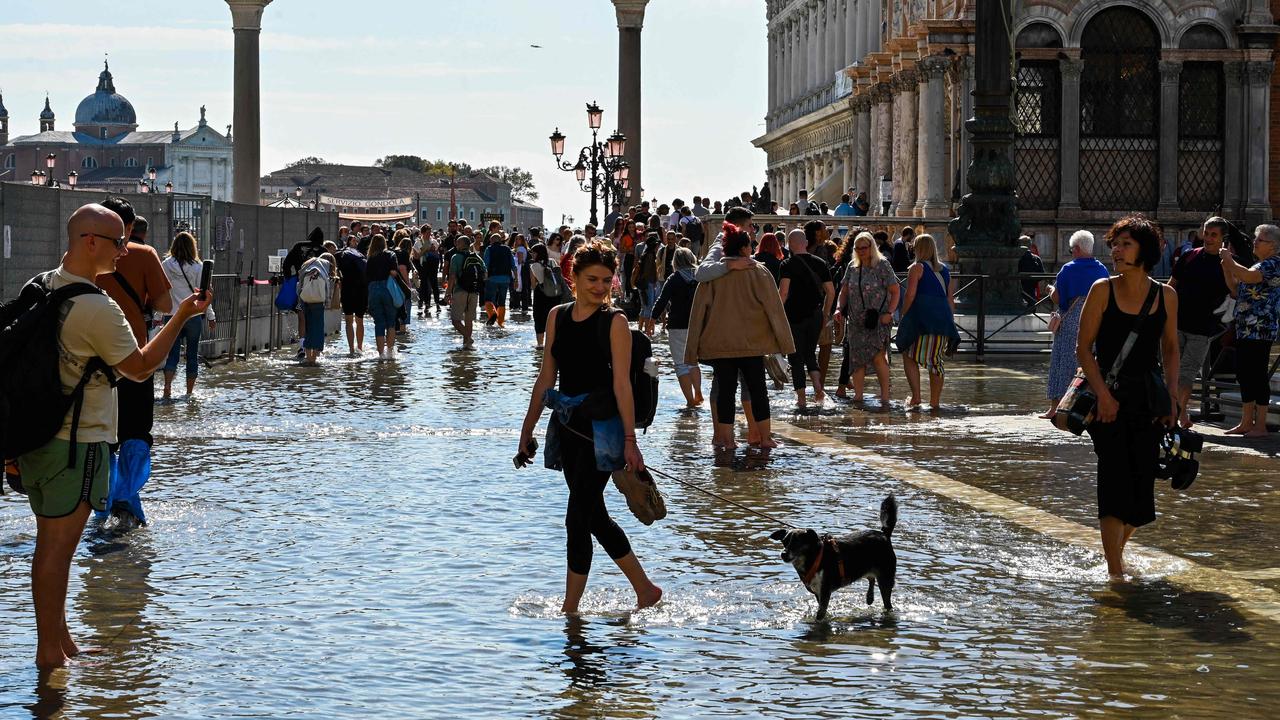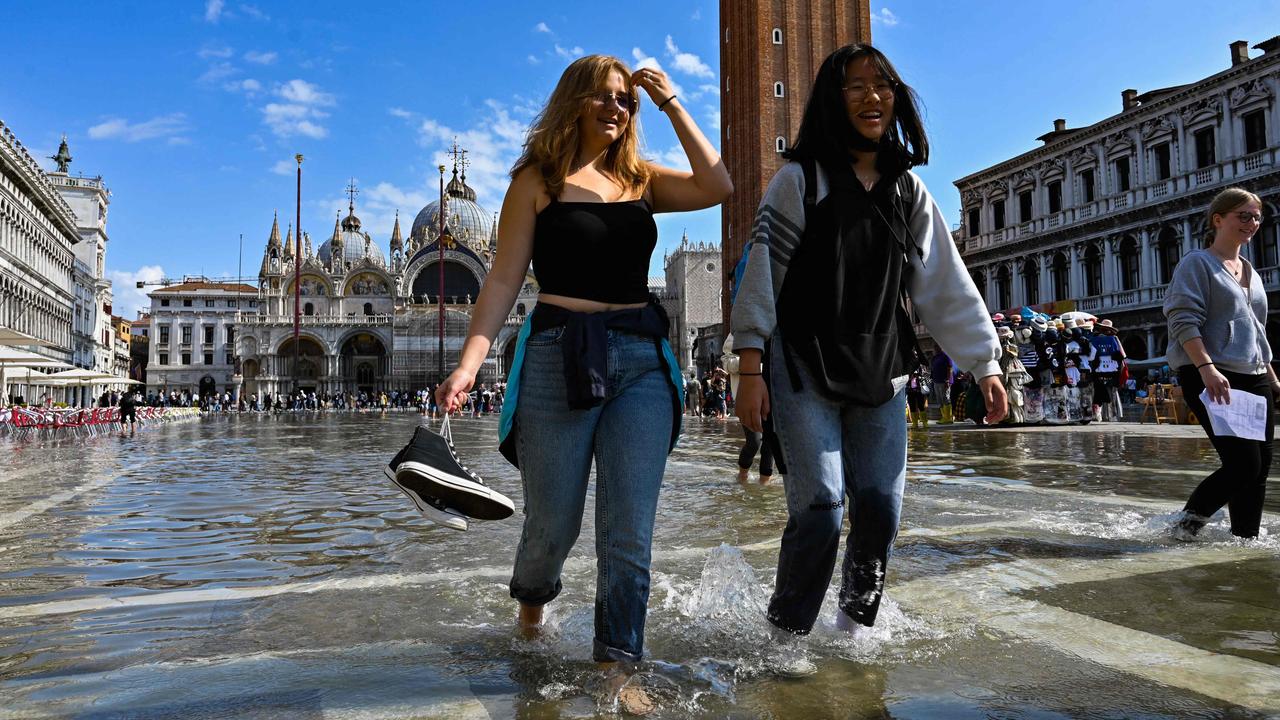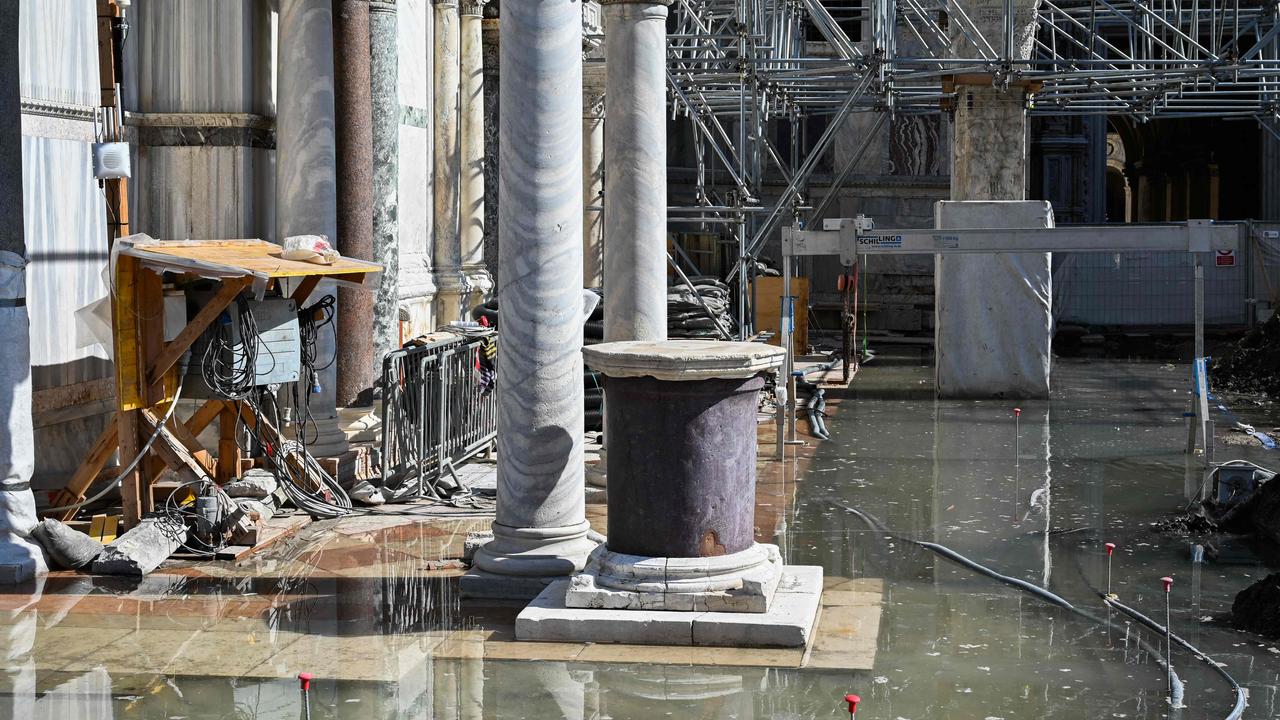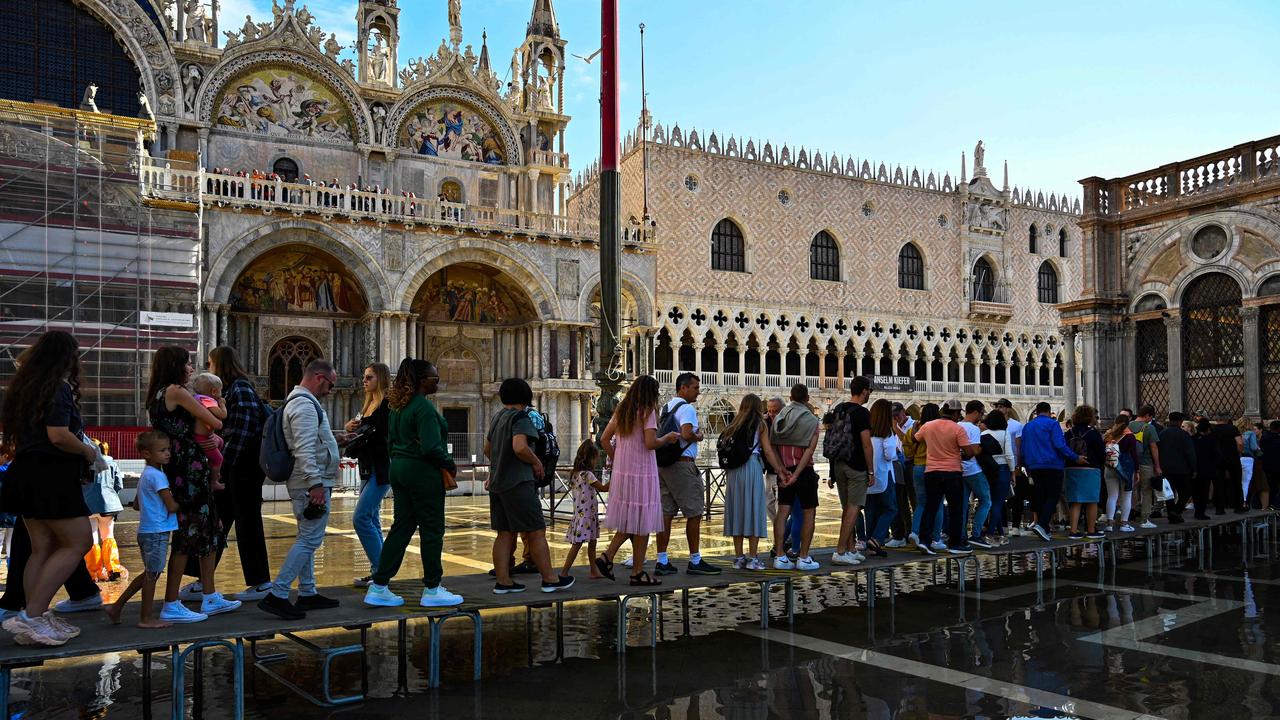Venice floods: Tourists seen frolicking in muddy flood waters
While tourists look to be unfazed by what’s happening, it’s something worrying the city faces every year between the months of October and January.
Venice has flooded again.
The popular tourist destination in Italy was hit by seasonally high waters, forcing tourists to sit at cafes barefoot, with others wading through the famous St. Mark’s square wearing gumboots, or not footwear at all.
Each year between the months of October and January, sections of Venice experience extreme flooding.
Stream your news live & on demand with Flash. From CNN International, Al Jazeera, Sky News, BBC World, CNBC & more. New to Flash? Try 1 month free. Offer ends 31 October, 2022 >

The seasonal high tides are known as “acqua alta,” or “high water”.
A series of photos show tourists unfazed by the rising water, indulging in refreshments at busy cafes in St. Mark’s square.
One man is seen shirtless, with his feet on a chair as he enjoys the warm weather, while others look to be smiling and chatting as they enjoy an Aperitif.
The city of Venice is made up of smaller islands connected by bridges with its floods reportedly caused by a combination of factors.


Experts say it is exacerbated by climate change from rising sea levels and unusually high tides, to land subsidence that has caused the ground level of the city to sink.
When strong winds coincide with high tide, water from the nearby Adriatic Sea flows into the lagoon, causing flooding.




However, in November 2019, the UNESCO world heritage site, experienced its worst flooding in over 50 years.
Authorities said the high tide reached 1.87 metres, just below the record 1.94m set in 1996.
As much as 80 per cent of the city was under water which was over one metre deep in some areas. It caused widespread damage to boats and buildings.

The city has tried to adapt to the flooding by constructing elevated walkways called “gangways,” while businesses now use floodgates and pumps to try keep the water at bay.
However, a worrying climate change report from 2017 published in Quarternary International, claims that Venice could be permanently flooded by 2100.
Venice continues to gradually sink due to its weak foundation and location on shifting tectonic plates — and by 2050, extreme flooding like that of 2019 may recur every six years instead of every one hundred years, according to the Intergovernmental Panel on Climate Change.






